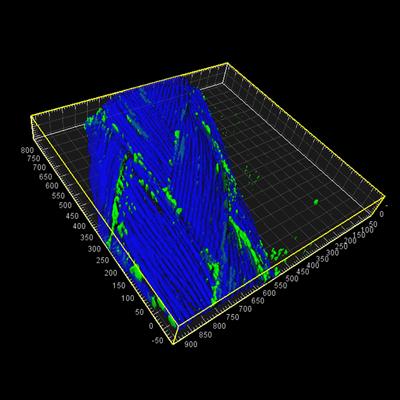Research project: Modelling our tiny uninvited guests
Image-based modelling of biofilms.
Image-based modelling of biofilms.

Biofilms are bacterial communities encapsulated within a self-secreted extracellular polymeric substance and are responsible for a wide range of chronic medical device related infections.
Understanding and addressing the conditions that lead to the attachment and detachment of biofilms from biomedical surfaces (orthopaedic implants, sutures, intravenous catheters, cardio-vascular stents) has the potential to identify areas of the device that might be more prone to infection and predict how and when biofilms might dislodge.

In this project, an integrated software methodology was devised to create image-based microscopic finite element models of real biofilm colonies of Staphylococcus aureus attached to a fragment of surgical suture. The goal was to predict how deformation of the suture may lead to the potential detachment of biofilm colonies by solving the equations of continuum mechanics using the finite element method for various loading cases. Tension, torsion and bending of the biomaterial structure were simulated, demonstrating that small strains in the suture can produce surface shear stresses sufficient to trigger the sliding of biofilms over the suture surface. Applications of this technique to other medical devices are straightforward.
Bioengineering and human factors